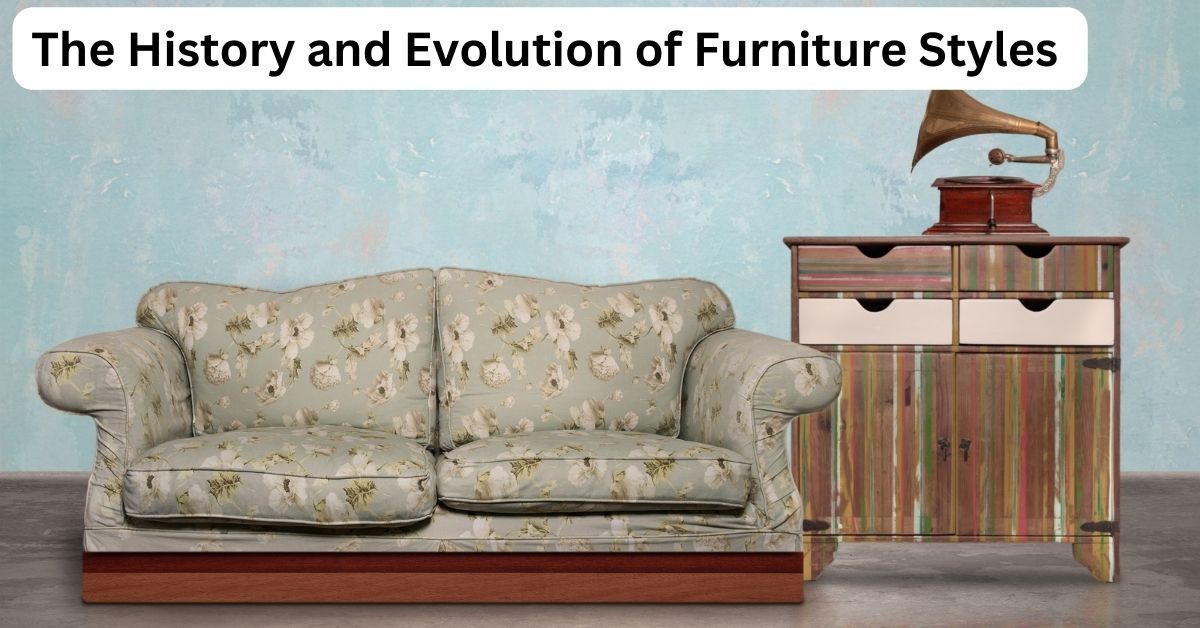Uncategorized
The History and Evolution of Furniture Styles
Furniture is an integral part of our daily lives, from the comfortable sofa we relax on after a long day at work to the sturdy table we use for meals. Furniture is not only functional but also serves as an aesthetic element in interior design. Over the centuries, furniture styles have evolved, influenced by changing social, cultural, and technological trends. In this blog post, we will explore the history and evolution of furniture style, from ancient times to modern-day designer furniture.
Ancient Furniture Styles

Furniture has been around for thousands of years, with some of the earliest examples found in ancient Egypt and Mesopotamia. Ancient Egyptian furniture was often made of wood and adorned with intricate carvings and colorful paintings. The furniture was primarily functional, with chairs, tables, and beds serving practical purposes.
In ancient Greece, furniture was more ornate, featuring inlaid patterns and animal motifs. Greek furniture was often made from expensive materials, such as ivory and bronze. The Greeks valued comfort, and their furniture designs reflected this, with chairs featuring upholstered seats and backrests.
Medieval Furniture Styles

During the Middle Ages, furniture became more prevalent in households, although it was still mostly reserved for the wealthy. Medieval furniture was often massive and bulky, with pieces such as thrones and large cabinets serving as status symbols. Carvings and detailed embellishments were popular, and furniture was often made from oak or other sturdy woods.
Renaissance Furniture Styles

The Renaissance period saw a shift towards more elegant and refined furniture style. Renaissance furniture was characterized by graceful curves and intricate details, often featuring inlaid patterns and gilded accents. Furniture was made from a variety of materials, including walnut, ebony, and rosewood.
Baroque and Rococo Furniture Styles

The Baroque and Rococo periods saw furniture style become even more ornate and decorative. Baroque furniture was characterized by exaggerated curves and dramatic carvings, while Rococo furniture was more delicate and featured intricate designs. Furniture during this time was often made from exotic woods and featured gold leaf and other luxurious materials.
Provincial Furniture Styles

During the 18th and 19th centuries, furniture style became more regionalized, with provincial furniture reflecting the unique styles of different regions. French provincial furniture, for example, was characterized by simple, rustic designs and natural materials such as wood and linen. English provincial furniture, on the other hand, was more elegant and refined, featuring graceful curves and ornate carvings.
Modern Furniture Styles

In the 20th century, the style underwent a significant shift towards more modern and functional designs. Modern furniture was characterized by clean lines and minimal embellishments, with materials such as steel and glass replacing traditional wood and upholstery. The Bauhaus movement, which emerged in the early 20th century, was particularly influential in shaping modern furniture style. Bauhaus furniture was functional and practical, with designs focused on usability rather than aesthetics.
Designer Furniture Styles

In recent years, designer furniture has become increasingly popular, with designers such as Charles and Ray Eames, Arne Jacobsen, and Philippe Starck creating iconic pieces that have become synonymous with modern design. This furniture is often characterized by innovative materials, unique shapes, and a focus on both form and function.
In conclusion, the furniture style has evolved significantly over the centuries, reflecting changing social, cultural, and technological trends. From the ornate designs of ancient Egypt to the sleek minimalism of modern designer furniture, furniture styles have always served both practical and aesthetic purposes. As we continue to evolve and develop new materials and technologies, it will be interesting to see how furniture styles continue to change and adapt to our changing needs and tastes.

